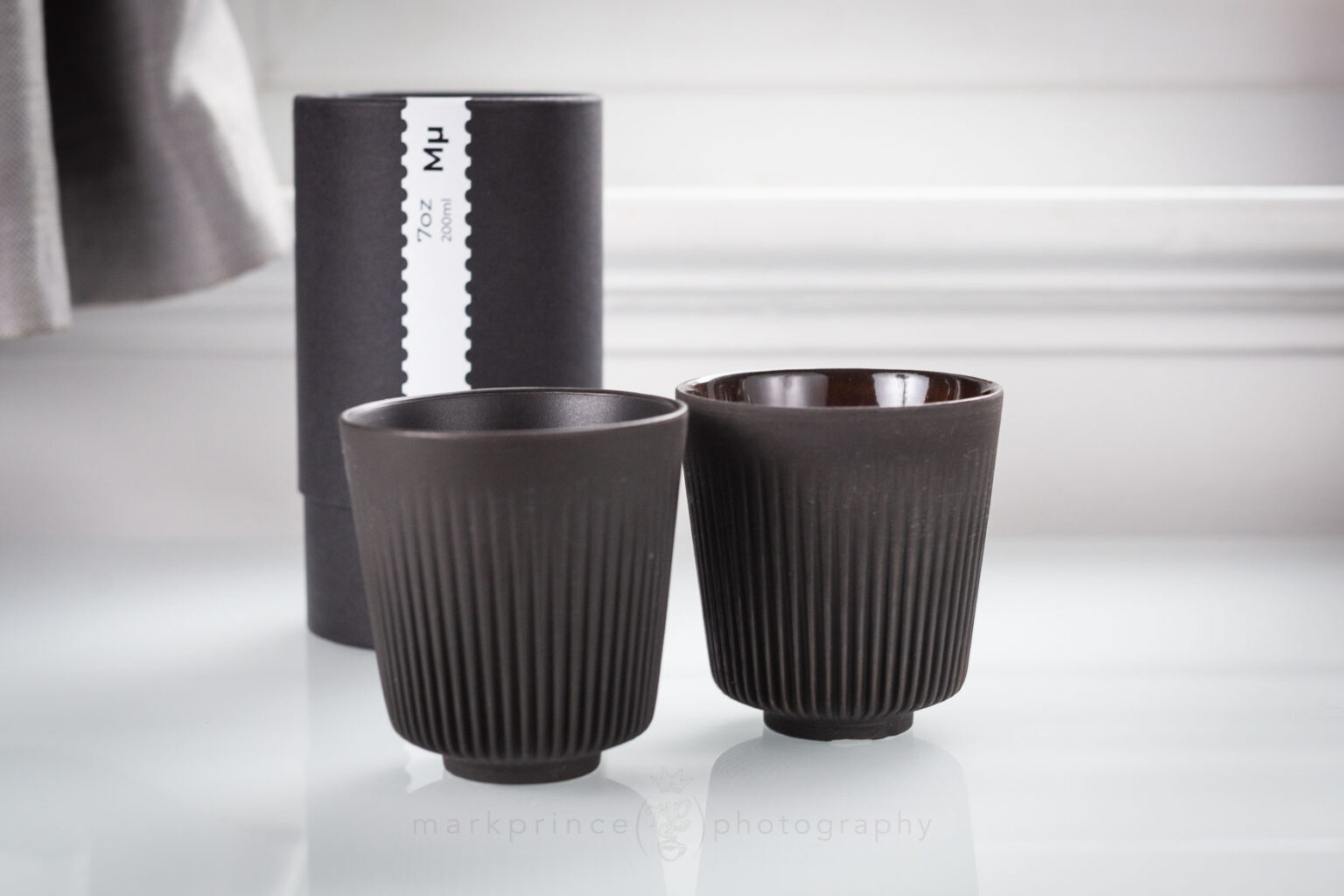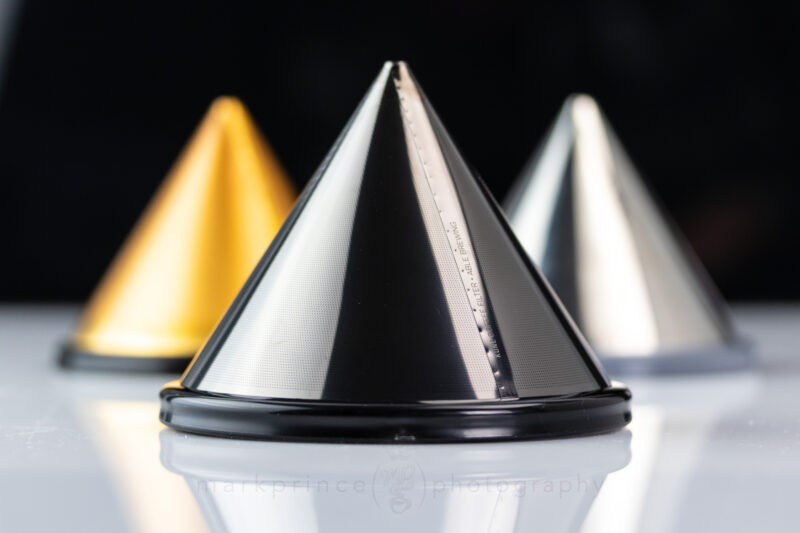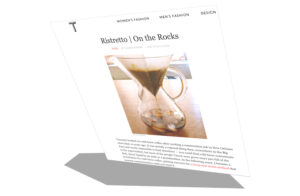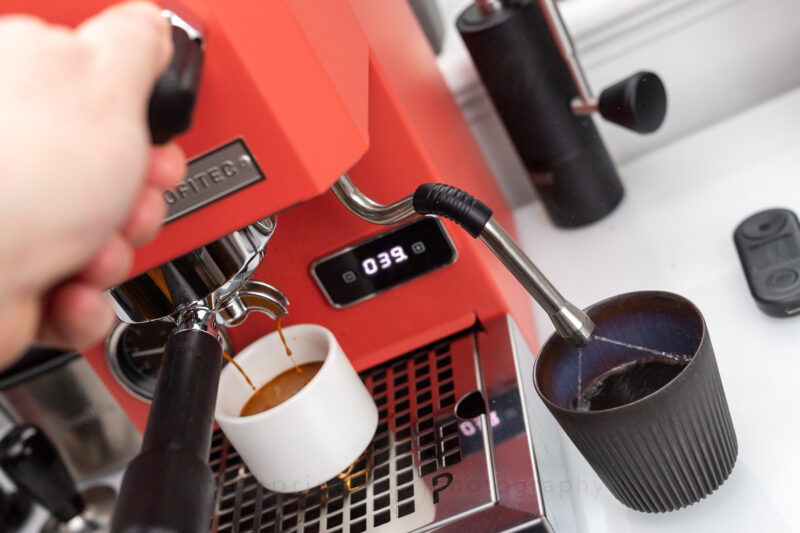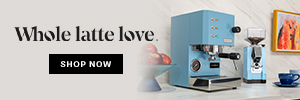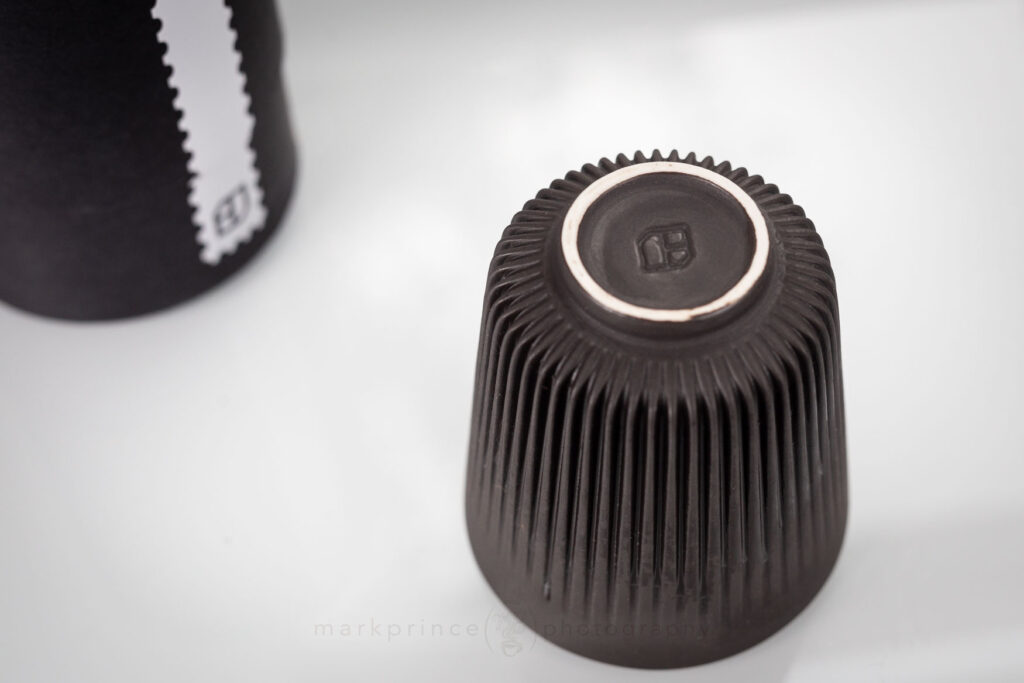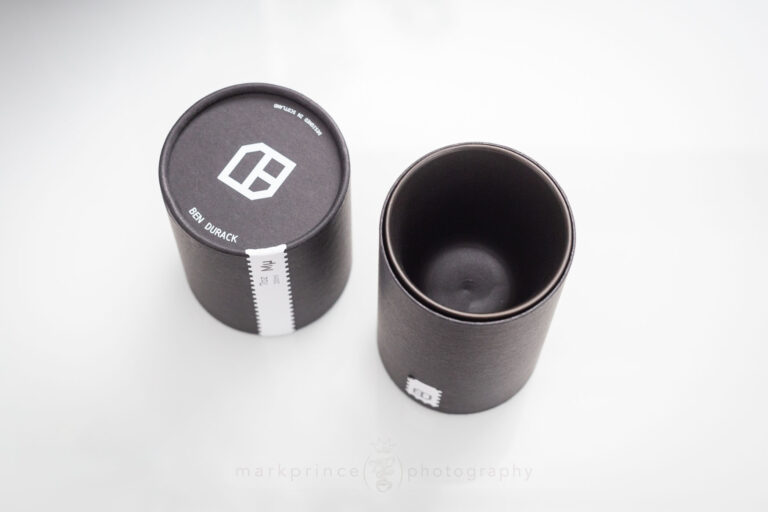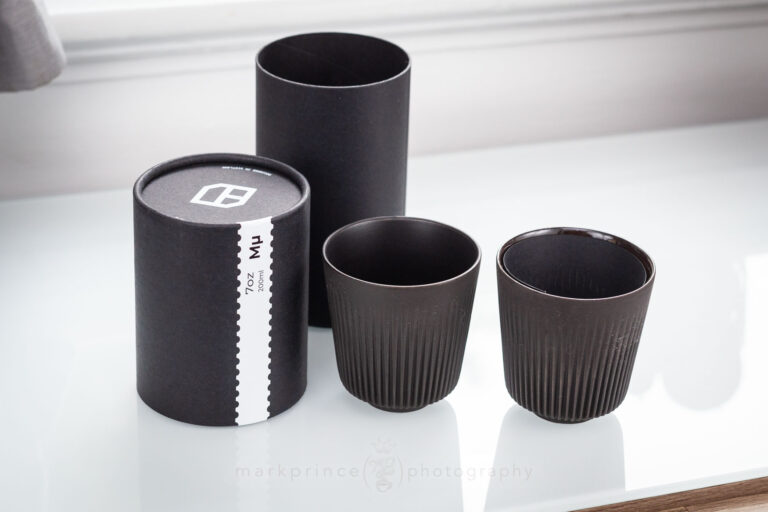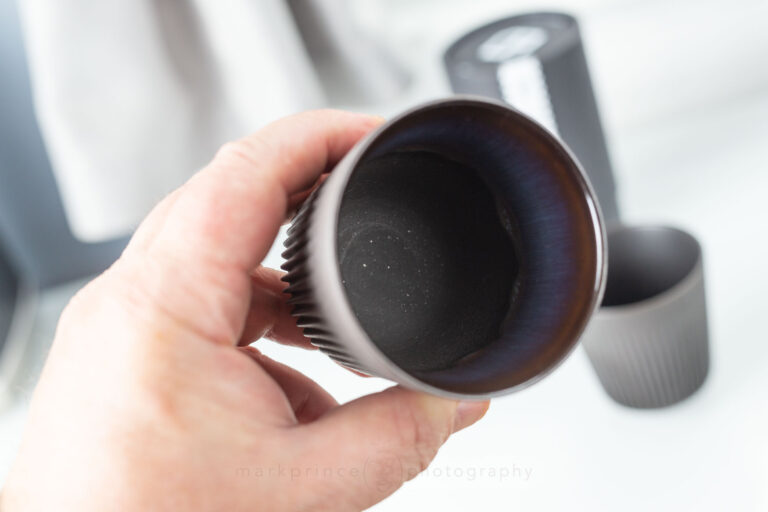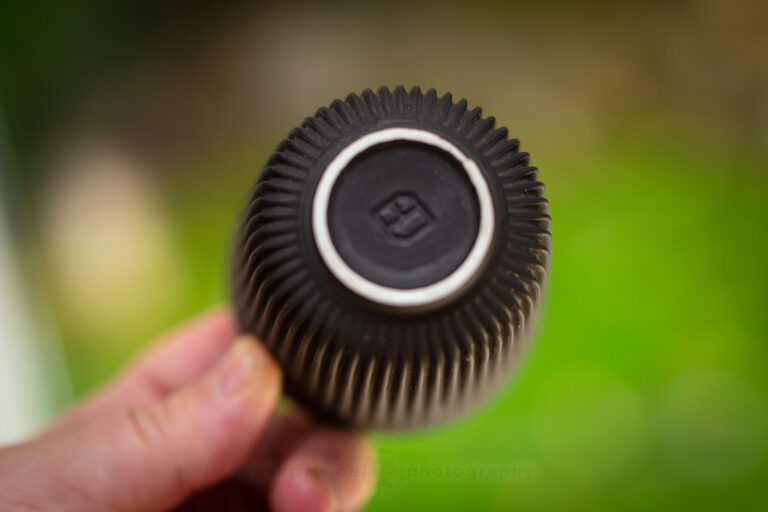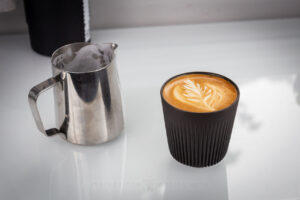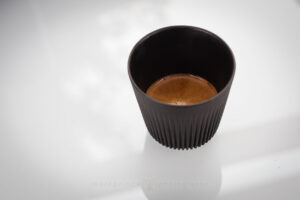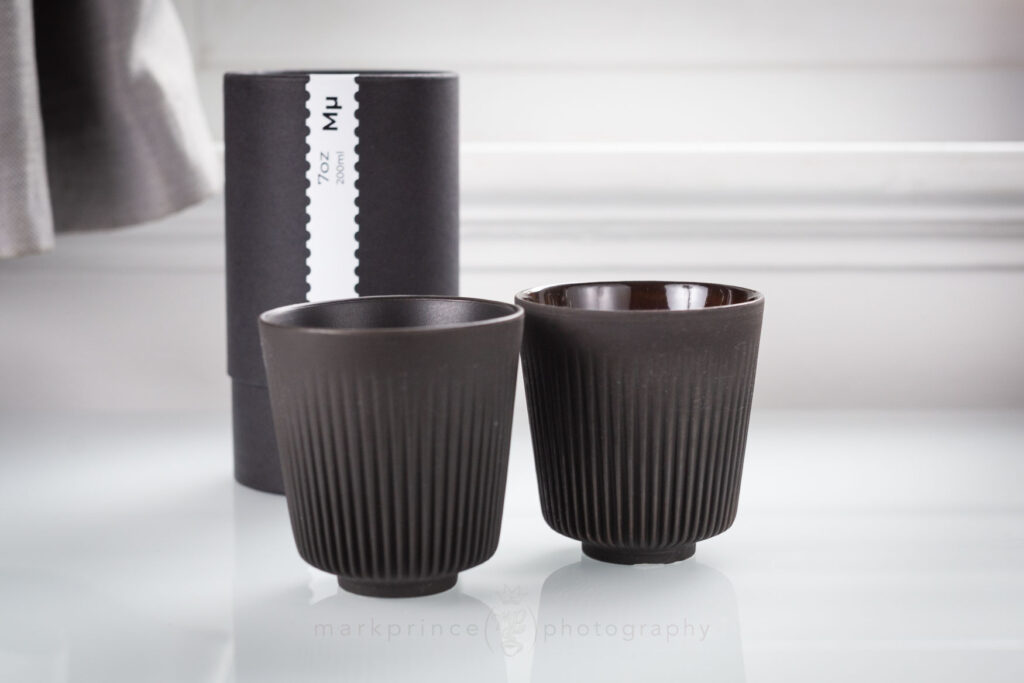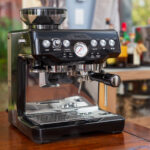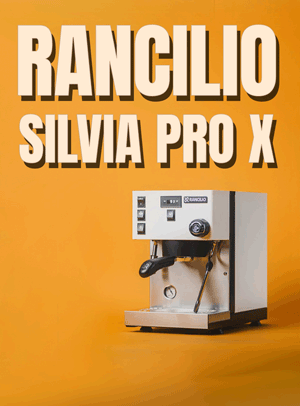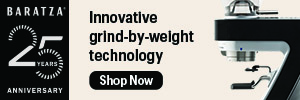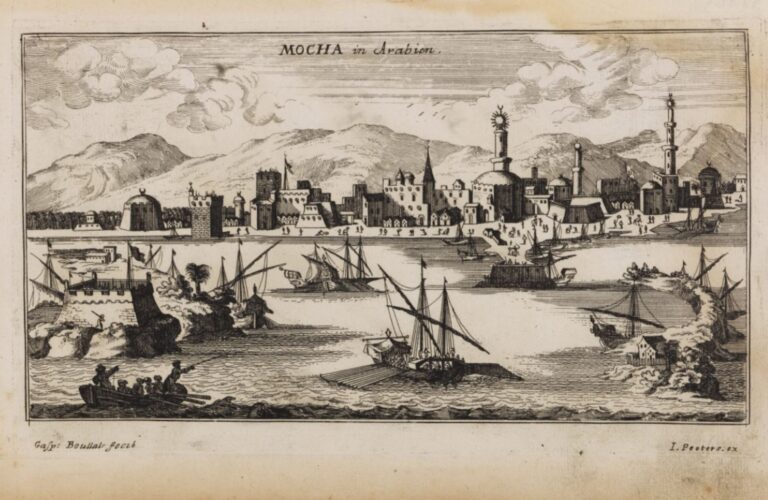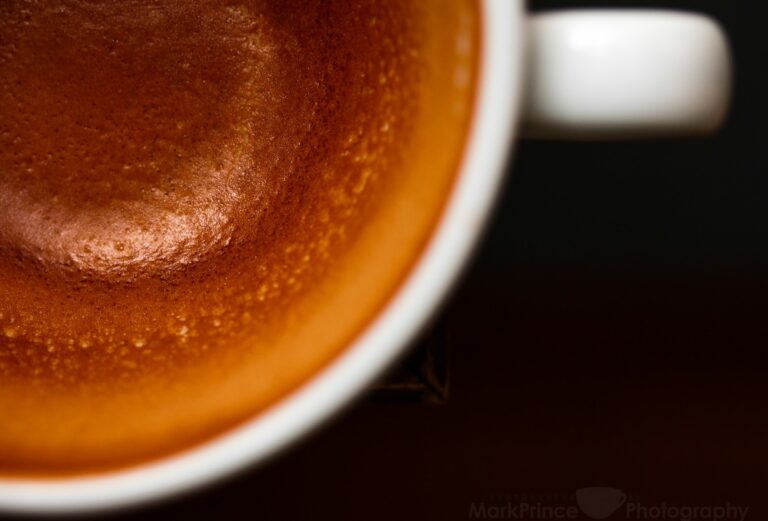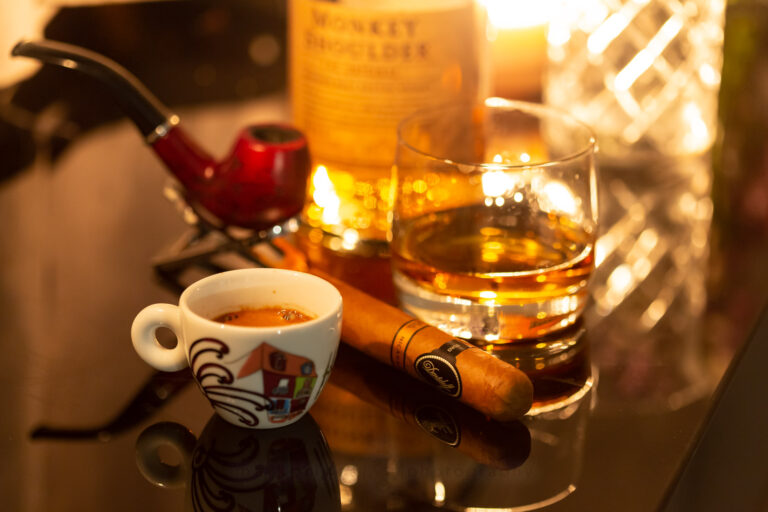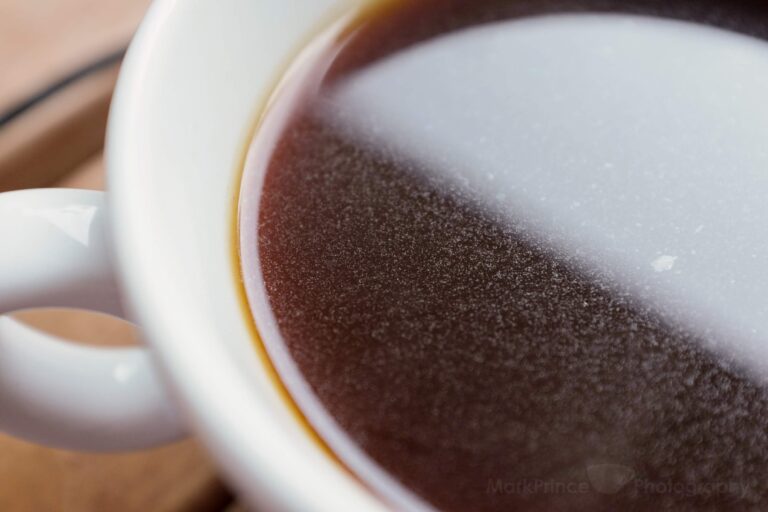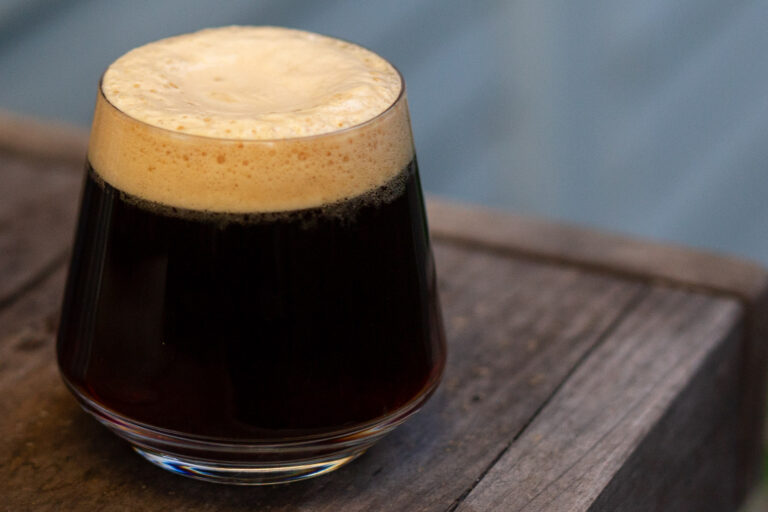Some time ago, I got a message from a fellow via my Instagram Account, asking me if I’d be interested in taking a look at a project he’d been working on since July, 2018, and was about to see to fruition. That fellow is Ben Durack, from Scotland, and his project is a porcelain, handle less drinking cup designed for espresso based drinks like Americanos and Cappuccinos.
Durack’s background is very intriguing. His background is in product design consultancy and running a digital fabrication studio, and he also teaches a Three Dimensional Design course in Aberdeen, covering product design, jewelry and ceramics. He’s also widely fascinated with the tactile feel of everyday objects, and how they can live outside normal expectations. And he loves coffee, perhaps just as much as he loves design.
I asked Durack about where the inspiration behind the cup designs came from. “This design was born out of my love affair with Japanese design and my work surroundings, which happens to be a modernist building made from steel I-beams and glass.” Durack said. “.The form is very much inspired by traditional Japanese yunomi tea cups: an everyday cup that features a handleless design. The ribs were originally inspired by the I-beams that surround me at work but quickly reminded me of heatsinks. I began to experiment with how far the ribs could be pushed with the slip casting process, including wall thickness, depth of indentation, number, cross sectional profile, types of clay, firing cycle, and glaze application. My background in additive manufacturing and tooling design for mass produced products allowed me to come at the design of a porcelain cup a little differently to those more traditionally trained as I was able to create forms others aren’t able to and iterate with this quickly to test variations; of which I have probably experimented with hundreds over the years.”
That was a mouthful, so I asked him to give me the short version. “My cups are designed to celebrate craft, pushing the limits of production processes through elegant, refined design.” Durack said.
He went on to say, “Design (in general) over the last 10-15 years has been driven by reducing friction: giving consumers less time to think so that organisations can encourage decision making in their favour. I find myself more and more interested in adding friction (to design), to slow us down and to give our minds time to take stock and appreciate the elements around us.”
Durack’s new line of cups is part of that design ethos to enjoy the ritual of drinking coffee more in a different way.
Ben Durack 200ml Cups
Durack sent me two samples from his first production run of the cups, one with a normal black glaze inside, and one with a special glazed interior he was experimenting with (but will not be available in his first full production run).
The packaging is excellent and reflects Durack’s wont of having minimalist impact on the environment. Two cups are packaged in a cardboard tube, with heavy paper acting as the buffer between the two cups inside. The tube is shipped in a bigger box, but in store and on cafe shelves, the packaging is very minimal yet effective, which is a good thing.
Removing the cups from the tube, my very first impression is “Japanese”. I see where Durack got his Japanese inspired design from. We’ve seen this shape (sans the ribs) in many a Japanese tea set.
My next impression was one of quality. I could see the fine craftspersonship in these cups. The black – I’m normally not a fan of any ceramic or porcelain that isn’t white – is matt in colour and well executed in these cups. Because the cups are porcelain and allow for finer tolerances, they have a thin drinking lip, much thinner than you see on some other examples of porcelain and almost never seen on lower grade ceramics. I do think the thinner lips on cups lead to a better drinking experience.
I know just enough about the production of ceramics and porcelain to be dangerous. These cups, which I initially thought were a high grade ceramic, are actually in the porcelain class, but do not have the polished, finished glaze we’re all familiar with on most porcelain. There is a rough tactile feel to the smooth surfaces of these cups, inside and out. Rubbing your fingers inside, you feel the slightest grain to the texture. It’s even more present outside near the top of the cups. Because of the high firing of these cups, they become vitrified (which makes it non porous and food safe) and doesn’t need a glaze.
Overall, the cups feel good and high end. Dense in structure. Solid. Well refined edges. Solid foot. Reassuring in the hand.
Next, we come to the ribs, and the modus behind these Ben Durack Design cups. Friction. Tactile feel. And they serve a purpose beyond visual design.
The ribs, which start shallow near the top of the cup, and get deeper as you move down, serve the above two purposes (friction and tactile feel) but also to insulate the heat inside the cup from your hands, much like a heatsink does on a computer chip. The question is, do they work as intended? (we’ll get to that).
There’s been some speculation that the ribs – if they do prevent your hand from getting burned by the hot coffee inside the porcelain cup – will also leech away heat too fast in the cup. Durack addressed that himself in an Instagram post
The cups weigh 156g each, have a diameter of just under 8cm at the top, and stand 8.2cm tall. They hold 200ml of liquid.
Using the Ben Durack 200ml Cups
I’ve had the absolute pleasure of using these cups for over a month now. They get used at least 2 or 3 times a day in fact, and thanks to them being dishwasher safe (many ceramics and some rough-finish porcelains are not), are easy to clean.
The drinking experience from these cups is, as stated, a pleasure. I’m a firm believer that the package – when well designed and well executed – helps enhance the product in both sensory and impression, and these cups do just that. You feel like you just built a cappuccino in a high end, unique product, and that makes your brain think the drink is going to be that much better. As long as your cappuccino (or americano) game is on point, your drink will taste better in these cups because your brain is fooling you into believing that.
The ribs… well they do work, to a point. The work excellently on the tactile and friction fronts that Durack was aiming for. On the heat reduction front, a bit less. If you’re building a particularly hot drink (cappuccinos are not “hot” per se, with all that 145F milk inside; americanos and pour over coffee are truly “hot”), you will notice the heat to the point where holding the cup for more than 30-45 seconds might become uncomfortable.
The bottom line is this: the ribs do a good enough job of keeping the cup cooler in the hand than a standard smooth-wall porcelain or ceramic cup would do.
I have come up with a bit of a peeve on these cups. Their foot is the narrowest diameter element on the cup. That means they’re easier to knock over than a standard porcelain or ceramic cappuccino cup. And I’ve done so on at least 3 occasions, swiping my hand here and there and accidentally bumping the cups as they sit on the table in front of me. This is where design beats function: the design and silhouette of the cups is beautiful, but the function of the narrow foot with the bottom belly of the cup sitting 5mm higher means it’s easier to knock over.
One more note: the cups are dishwasher safe, but not microwave safe.
How to Get Them
Eventually, you’ll be able to buy the cups direct from Ben Durack on his website. They will cost £35 for a set of two (and more discounts if you buy more sets of two). (updated information, fall 2023).
Durack also plans on doing an espresso cup size, and a wider latte bowl design, as well as other colours. You can sign up for a pre order discount and his mailing list by visiting the link above.
Huskee Cups
Lastly, I can’t cover these cups without talking about something that has come up on my own Instagram account when I posted photos of them. People have compared them to the Huskee Cups, which is natural, since they do look very similar at first glance.
I asked Durack about this and he says that he started working on his own design before the Huskee Cups went up on Kickstarter (in Australia) in 2018. The Huskee cups are also primarily polypropylene – a form of plastic – with some coffee husk material in them, which ironically for a product pitched as environmentally friendly, makes them a lot harder to recycle (this link is an eye opening read if you are considering purchasing a Huskee Cup).
On top of that, the Huskee cups seem to be a pay to play kind of product, designed (in part because of their difficulty in recycling), to be exchanged with a new Huskee Cup (for an added fee going to Huskee) at cafes and via the mail, which means the carbon footprint is probably through the roof.
When you compare both products more closely, you can see there’s a refinement and level of detail present in the Durack cups that is absent in the Huskee cups, making them only the same in general shape, but nowhere near the same on details.
I actually don’t care which one was designed first; what I do care about, being a consumer advocate on coffee, is that you aren’t getting fleeced long term by some kind of hidden subscription service or ongoing fees. And I really don’t like companies that run on an ethics or environmental pitch, when there’s a lot of hidden things that make the product not very environmentally friendly.
The most important thing here is this: the Huskee cups are plastic. If you like drinking coffee in plastic, that’s great. I don’t. Ceramic and porcelain are the best materials to hold coffee – by far – and Ben Durack’s cups are made from a high-fired ceramic porcelain. It’s crazy easy to pour molten plastic into forms and make a cup. It’s a lot harder to do this design in ceramic or porcelain.
Mark has certified as a Canadian, USA, and World Barista Championship Judge in both sensory and technical fields, as well as working as an instructor in coffee and espresso training. He started CoffeeGeek in 2001.
-
Mark Princehttps://coffeegeek.com/author/markprince/April 21, 2024
-
Mark Princehttps://coffeegeek.com/author/markprince/April 16, 2024
-
Mark Princehttps://coffeegeek.com/author/markprince/April 10, 2024

